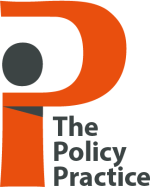Kelsall,T,. Laws, E. and Befani, (2021) “The ingredients of successful adaptive programming’ London:ODI.
This study identifies the core ingredients of adaptive programming by using a qualitative comparative analysis of the UK-Irish funded Institutions for Inclusive Development programme in Tanzania (2016-2021).
The core ingredients of adaptive programming include:
Step 1. Assemble your team
- Enlist locally based staff, preferably with strong local networks or membership in a relevant national organisation.
- Add a team leader or another senior staff member with a track record of successfully delivering an adaptive programme
Step 2. Identify a problem
- Look for an issue that is already receiving a high level of political attention.
- Use a combination of light-touch political economy and light-touch systems mapping and
analysis to deepen your understanding of the problem and plot possible solutions. Apply more rigorous analysis as appropriate. - Formulate a loose theory of change or set of hypotheses about how change might happen.
Step 3. Design your intervention
- If possible, enlist positive deviants and/or leverage external best practice to start generating possiblesolutions.
- Combine with human-centred design principles, particularly when trying to create more inclusive decision- making, planning or policy processes.
- Have a credible plan in advance for taking interventions to scale.
Step 4. Test and learn
- Test one approach or potential solution to your problem, gather feedback and adapt as necessary.
- Enlist the support of implementing agencies and non-state actors, and – especially if you anticipate or encounter organised opposition – high- level political actors.
- Take care to also maintain the support of your funding organisation(s).
- At regular intervals, review your progress using light-touch political analysis tools, perhaps with more in-depth analysis at critical junctures.
Step 5. Spend strategically and stay flexible
- As your intervention matures, use programme funds in a strategic way. You may look for solutions through brokering and convening, but be prepared to provide funds for pilots, small-scale infrastructure, technical assistance or core funding.
- As needs arise, and depending on your problem, you may also need to build capacity for innovative behaviour or innovative technology; alternatively, it may besufficient to improviseon existing solutions.
- Maintain flexibility to be able to respond appropriately.
